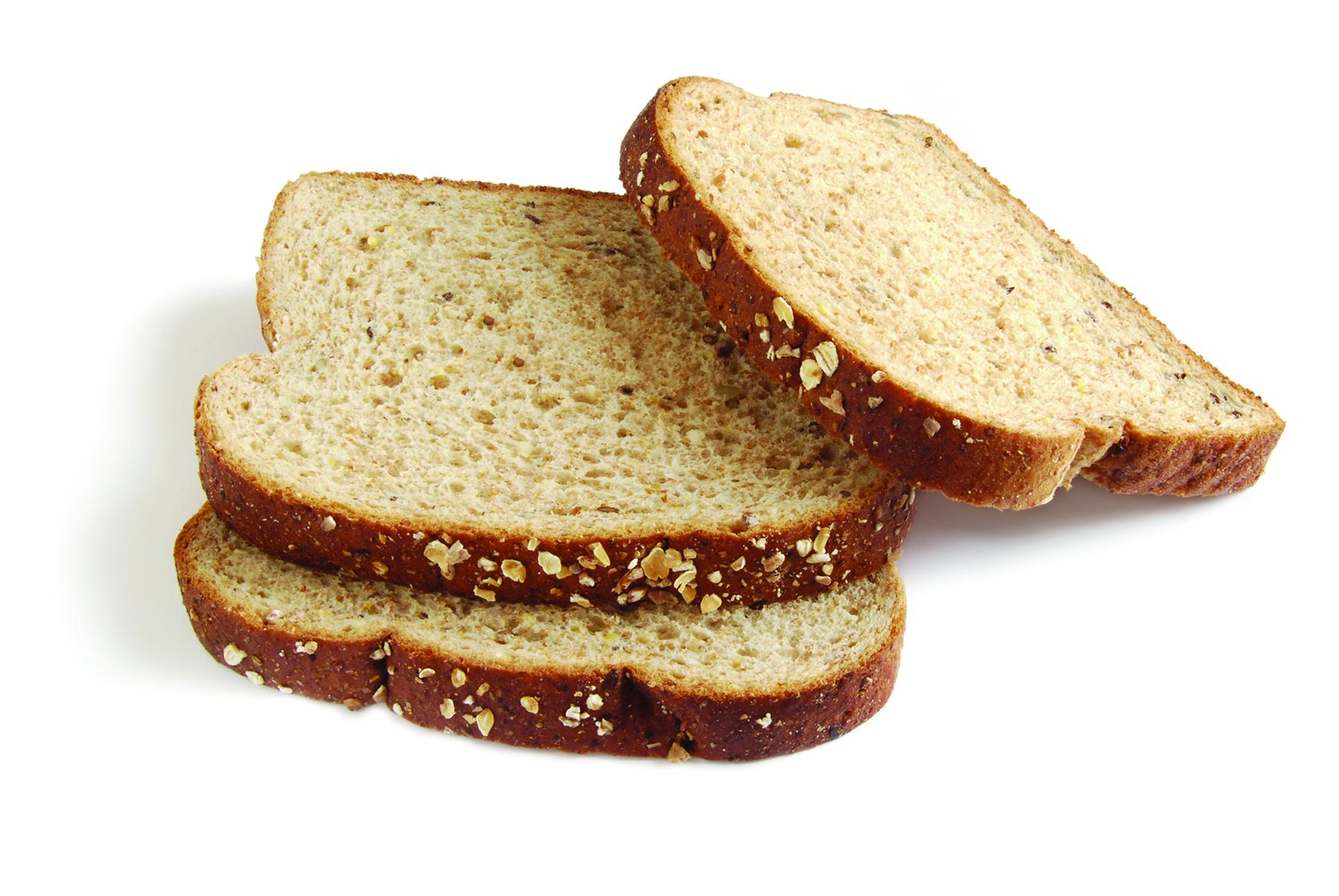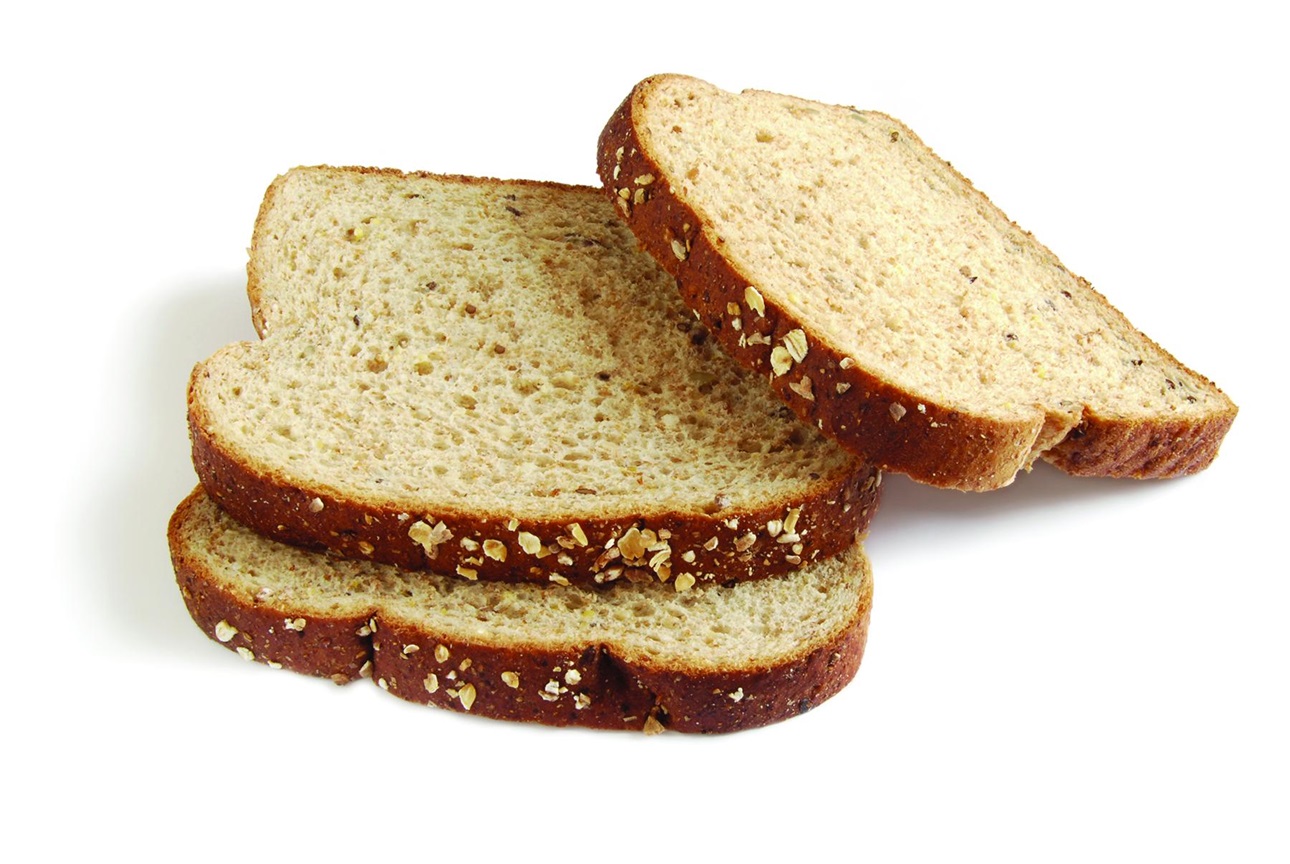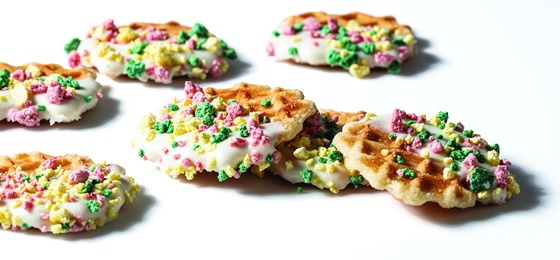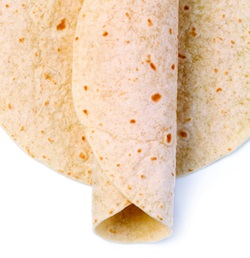Evolving Ingredients Help Bakers Rise to Market Challenges
INGREDIENTS
As with all sectors of the food and beverage industry, a broad range of trends is driving innovation in the bakery category, giving us products formulated with plant protein, healthier fats, creative flavor and color combinations, or less sugar and fewer synthetic ingredients.
“Now more than ever, bakery customers are seeking better-for-you items,” says Melissa Trimmer, senior bakery application chef at Dawn Foods. “Because of this, we are seeing major innovation in clean label, vegan, and gluten-free offerings.”
In addition to these areas, the interest in plant-based and reduced-sugar diets is also affecting the future of retail bakery and foodservice segments, says James S. Jones, vice president of customer innovation at AAK. “As R&D continues to improve in plant-based and gluten-free segments, we expect vegan, vegetarian, and particularly, flexitarian, to increase in popularity as the alternatives increasingly look, feel, and taste just like their conventional counterpart.”
And if this is not enough, product aspects like texture, shelf life, nutrition, and indulgence are also top of mind. No matter the challenge, though, ingredient manufacturers have solutions. For example, Ardent Mills offers chickpea flour and a range of whole and ancient grains for both nutritional and functional benefits, and Ingredion recently showed how its pulse flours, texturizing systems, sweeteners, and starches help manufacturers to add nutrition, reduce sugar, and optimize texture. Ingredion featured some of these ingredients in product concepts it showcased at the 2019 International Bakery Innovation Expo (IBIE). These included crispy gluten-free pizza crust; scones fortified with fiber and plant protein; gluten-free muffins; and vegan, reduced-sugar chocolate cookies fortified with plant protein.
When it comes to texture and shelf life, DSM offers CakeZyme Majestic and BakeZyme enzymes to improve these qualities in gluten-free bread, cakes, and other baked goods, and Palsgaard produces emulsifiers that formulate everything from chocolate brownies that are dense, chewy, and moist to cakes that have stable aeration and a longer shelf life. Eggs, too, offer leavening, emulsification, viscosity improvement, flavor, and more to bakery products, according to the American Egg Board. Algaia, which specializes in seaweed extracts, recently teamed with Herbstreith & Fox, which offers citrus and apple pectin, to sell ingredients that blend both pectin and alginates to give stability to bakery fillings, bakery toppings, pies, and cookies that use fruit preparations. And QUALISOY promotes the benefits of using high oleic soybean shortening in icings; it produces icings that are easy to spread and pipe, hold color well, and will not dry out quickly.
The importance of the color and flavor of bakery products cannot be overstated, as both help generate sales and consumer interest. “We are seeing the rise of floral and botanical flavors as well as a juxtaposition of bright bold popping colors as well as subdued natural hues,” says Trimmer. At the same time, some bakers and manufacturers are formulating with naturally derived ingredients. Dawn Foods offers Naturally Brilliant buttercreams and flat icings formulated with colors sourced from plants, fruits, and vegetables; made with natural flavors; and made without artificial sweeteners. Cereal Ingredients offers various flavored and colored inclusions for bakery applications. Some of these include Flav-R-Bites heat- and moistureresistant flavored and/or colored particulates, and Flav-R-Swirl preblended mixes that give a flavored swirl effect to breads in popular flavors like cinnamon, strawberry, maple, and blueberry.
This month’s Ingredients column features a closer look at how product and consumer trends are shaping the bakery industry and ingredient development, with an emphasis on ingredients presented at the 2019 IBIE.
Plant Protein and Baked Goods
“Traditionally, bakery has been viewed as an indulgence category, which is likely why it’s been overlooked as a segment that could offer products with a health halo,” says Pam Stauffer, global marketing programs manager at Cargill. “That’s beginning to change as product developers incorporate new plant proteins into breads, waffles, cereals, and snacks, giving consumers permission to indulge.”
Both pea and soy proteins boost the nutritional profile of a wide range of bakery products in a label-friendly way, says Matt Gennrich, senior food technologist, R&D bakery applications at Cargill. “We know consumers are attracted to protein-rich products, and with our plant proteins, bakers can create consumer-pleasing products with good or excellent protein claims.”
Cargill set out to gain a deeper understanding of consumer perceptions of plant proteins in bakery by surveying more than 1,900 American consumers for its Consumer Attitudes and Usage of Plantbased Protein 2019 proprietary insights report. Stauffer points out a few key findings: 75% of respondents said baked goods made with plant proteins taste better, 74% considered them healthier, and 73% felt they were more nutritious.
The research also identified some challenges for those who want to formulate bakery products with plant proteins, however. “From our consumer research, we know that one in four shoppers say they don’t like the taste of added protein, and one in five say they dislike the texture. Clearly, formulation expertise is required to manage these critical sensory issues.”
Some plant protein ingredients can contribute off-flavors or introduce textural issues to bakery products. “From a formulation perspective, our ability to incorporate plant proteins into a variety of bakery applications has grown by leaps and bounds. It starts with better plant proteins,” says Gennrich. “In addition, we understand how to mitigate the formulation challenges sometimes associated with plant proteins. Proteins tend to hydrate and compete for water, increasing the density of puffed cereals, snacks, and baked products. To help prevent dryness, we’ve learned to allow time for proteins to hydrate. In some formulas, replacing granulated sugar with corn syrup, liquid sugar, or sugar honey can create additional moisture. We’ve also found that some enzymes can promote improved texture.”
Cargill offers some plant protein ingredients that can boost the protein level without sacrificing taste and texture, says Gennrich. Traditional pea protein ingredients can give foods vegetal, grassy, bitter, or beany flavors. Cargill has made advances in solving issues with off-flavors with PURIS pea protein, which is made from pea seed varieties specially selected to minimize the off-flavors normally attributed to pulses, says Gennrich. “From a formulator’s perspective, PURIS pea protein offers some distinct advantages.” These include a very clean taste profile with minimal aftertaste, 80% pea protein, high solubility, and excellent dispersibility and mouthfeel, he says.
In addition to the PURIS pea protein ingredient, there’s soy protein, which Gennrich says has its own distinct advantages. “It’s a lower-cost option and provides emulsification and solubility functionality that other proteins simply don’t have. It is also one of the few complete proteins, from an amino acid perspective, sourced from plants.
Fat’s Role in Protein-Enriched Bakery
As mentioned, formulating bakery products with plant protein ingredients takes some consideration so that the baked goods have optimal texture and taste. The interactions between the proteins and water can pose a few challenges, but fats and oils offer some solutions.
As the gluten proteins hydrate in wheat-containing products, bonds that create the gluten network and give the dough its fundamental structure form, explains Jones. When 100% gluten-free doughs and batters are fortified with protein, the protein competes for much of the free water in the formulation, he adds. “This competition can prevent the starches and gums in the formulation from effectively hydrating, which in turns inhibits the dough from achieving its ideal structure and strength. Protein fortification can also affect the texture of the final product by imparting a dry and gritty mouthfeel and creating a hard bite. In both instances of gluten and gluten-free bakery products fortified with protein, proper hydration of doughs and batters is key for successful machinability and proper textural attributes in the final product.” Some might just add more water, but Jones says that this is not always a solution, as the additional water can affect bake times, processing times, dough machinability, and final product texture. What can help to improve the texture and stability of the baked goods in some of these cases is the addition of fats and oils, which offer several benefits.
First, fats and oils can prevent moisture migration and interactions between certain ingredients. “Take, for example, the order of ingredient addition when mixing cookie dough,” says Jones. “By first creaming together the fat and the flour, the flour will have a barrier which prevents some of the water absorption. This in turn allows the protein to have more available water for hydration, while also limiting the gluten development within the flour.”
Fats and oils also provide moistness to cakes, cookies, and enriched doughs that are fortified with protein, says Jones. “Through the addition of fats and oils, a softer and more tender crumb develops, which helps to mask the drying effect and prevent the hard texture that the protein imparts on the final product.”
The last solution that Jones mentions is that fats and oils help to lubricate the doughs (making them less sticky) and facilitate machinability on the production line.
“Of course, bakers still rely on fats and oils to control moisture, hold, disperse, and release flavor and color, slow staling, achieve desired bite, crispness, crunch and/ or mouthfeel, as well as for the all-important but frequently overlooked richness and satiety factors,” says Jones. “However, plant-based, gluten-free, and plant-based protein-enhanced bakery also present the challenges of flavor masking, the additional textural function required to compensate for lack of a gluten matrix in flavor release and modulation of the impact on mouthfeel of hydrocolloids, and the dry graininess associated with nongluten- forming plant proteins.” AAK works with its customers at three innovation centers to co-develop solutions of fats and oils to solve challenges of formulating not only plant-based, protein-enhanced bakery products, but gluten-free and traditional ones as well, says Jones.
Improve Bakery in a Clean Label Way
Jelly-stuffed all-butter brioche rolls, crispy tortillas formed into a cone shape and filled with Italian meats and artisan cheeses, and a fluffy, soft whole wheat hot dog bun wrapped around a hot dog and then dipped in tempura batter and deep fried are a few of the innovative bakery product concepts that highlighted Corbion’s range of ingredients at the IBIE. “For IBIE 2019, our goal was to showcase the trends and concepts that are happening in the market and driving change,” says C. J. McClellan, global marketing manager at Corbion. “We ultimately wanted to create conversation and see where we can continue to help our customers grow with new and exciting innovations within the market.”
This collaboration is important, as consumers want bakers and manufacturers to produce more innovative bakery products. “Over the years, the bakery industry has been very comfortable and traditional, and now we are noticing a time where consumers are willing to experiment with the baked goods they eat,” explains McClellan. “As consumers are becoming more adventurous and are seeking memorable eating experiences, the industry is striving to capture more consumers who do not regularly buy bread. There is even more activity around attracting consumers who are focused on low-carb, gluten-free diets with unique and intriguing, innovative products.”
Producing baked goods with cleaner labels, says McClellan, is one of the biggest challenges Corbion’s customers mention. “By removing the more traditional ingredients and replacing them with ones that are deemed ‘clean’ and not as functional, bakery manufacturers are challenged to find ways to maintain the quality, structure, taste, texture, shelf life, and appearance.”
Corbion produces a diverse range of ingredients it promotes as functional clean label alternatives to synthetic ingredients or ingredients that some consumers do not recognize. For example, Corbion featured enzyme blends, emulsifiers, and dough conditioners under its Ultra Fresh, Trancendim, and Pristine lines in the three bakery product concepts mentioned earlier. In addition to these ingredients, there’s also a line of naturally derived shelf-life and freshness extenders under the Verdad brand.
Sweetener Can Reduce Added Sugars
Sweet baked goods taste so good because of the indulgent sweetness. Sugar is the go-to sweetener, but this is slowly changing. “Growing consumer health issues and public consciousness of sugar in the diet along with greater visibility on the new nutrition facts panel have all made the interest in reduced sugar more mainstream for the bakery category, at least at some modest level of reduction, says Julia DesRochers, principal scientist at Tate & Lyle.
Reducing sugar in bakery products is a challenge since sugar is multifunctional and provides sweetness, browning, and texture enhancements, to name a few. “The introduction of Tate & Lyle’s Dolcia Prima Allulose, as well as a broad and versatile portfolio of stevia natural high intensity sweeteners, and Promitor Soluble Corn Fiber to add back bulk and mouthfeel, have all helped give bakery developers multiple tools to formulate great-tasting, reduced-sugar baked goods,” says DesRochers. “We continue to build on what we believe is one of the broadest toolboxes available to support food and beverage manufacturers who wish to reduce sugars and calories and deliver extraordinary taste.”
Allulose is a naturally occurring sugar found in very small quantities in figs, raisins, jackfruit, and maple syrup. Tate & Lyle developed a proprietary enzymatic process to commercialize its allulose ingredient, Dolcia Prima Allulose (it is currently used commercially in bakery products). It is lower in calories than sucrose and is 70% as sweet as sucrose, according to the company. Tate & Lyle has demonstrated that the sweetener functions in cakes and cookies and is exploring its use in frostings and creme fillings.
“With the FDA’s announcement on labeling regulations in April, stating that allulose is not required to be included as part of the total or added sugars declaration on the nutrition facts panel, there has been a swell of interest by companies big and small,” says DesRochers. “As consumers grow in their awareness about allulose’s health benefits and sugar-like taste, this popularity will continue to increase.”
Next-Gen PHO Alternatives
New high-stability soy shortenings offer partially hydrogenated oil (PHO) replacement solutions and bring functional improvements to several bakery product applications.
“Many initial PHO replacements came with challenges of their own. For example, some of the first PHO replacements for icing shortening left the end product with a dull color, waxiness, and post-hardening,” says Mark Stavro, senior director of marketing at Bunge North America. To address these issues, Bunge Loders Croklaan recently introduced three Vream Elite shortenings for use in icings, cakes, pies, and cookies.
The shortenings are made with interesterified high oleic soybean oil, so they offer improved functionality across a wide temperature range, says Stavro, who adds that they are optimized by application to address specific shortcomings of the original PHO replacements.
The three new Vream Elite shortenings join three others that were released earlier this year that function in icing, doughnut, and tortilla applications. “Vream Elite for icings delivers a bright white appearance and light texture and eliminates post-hardening, which means a better mouthfeel and longer shelf-life. Vream Elite for cake creates cakes with excellent volume and aeration,” says Stavro. The perfect pie crust should have a delicate flakiness, and lard can deliver this. However, lard has fallen out of favor with many food manufacturers. The Vream Elite shortening for pie mimics the texture and functionality of lard, says Stavro, while delivering freeze-thaw tolerance for pie crusts that are tender and flaky.
Bakers and manufacturers of cookies and doughnuts have a couple of shortening solutions that help improve texture challenges. “Vream Elite for cookies enables creaming of ingredients that leads to very smooth dough consistency and allows bakers to create their preferred finished texture, from soft and chewy to crispy. Vream Elite for doughnuts enhances adhesion of glazes and icings and reduces glaze cracking,” says Stavro. Finally, the shortening for tortillas improves rollability, which reduces tears, and it helps create very soft tortillas.
At the 2019 IBIE, Bunge Loders Croklaan featured the Vream Elite shortenings in product concepts like blackberry lemonade cookies, apple pie, pork tacos, candied fig cupcakes, and passion fruit cake rolls.
Fiber Ingredient in Free-From Products
“No egg, no milk, no meat. More and more people are voluntarily abstaining from animal products,” says Verena Klaus, business development manager, food & flavor at WACKER BIOSOLUTIONS, Wacker Chemie AG. Others are removing some foodstuffs from their diets due to health issues such as allergies, she says, and all of this is driving the popularity of “free from” products.
The bakery industry, like manufacturers of other food and beverage products, is looking for ingredient solutions to help produce bakery products for vegetarian and vegan consumers, and for consumers who want to reduce the amounts of animal products in their diets. WACKER BIOSOLUTIONS’ ingredient offering that addresses these trends is alpha-cyclodextrin (also called alpha-dextrin), which is manufactured under the brand name CAVAMAX W6. It comes in powder form and dissolves easily in water, says Klaus. “Particularly for large-scale bakeries, it is important that alpha-dextrin is easy to use, not affecting batter viscosity, which enables production on existing baking lines.”
CAVAMAX W6, a degradation product of natural starch, offers a convenient solution to replacing egg in baked goods, says Klaus. “The emulsifying, soluble dietary fiber not only stabilizes the fat during batter preparation and baking, but also supports aeration and foam building. This functionality enables total egg replacement.”
The company has demonstrated the effectiveness of the ingredient as an egg replacer in several kinds of bakery products, explains Klaus. “The combination of CAVAMAX W6, protein, and water can completely replace the egg normally found in the batter in any fine baked good. Our customers use it to produce vegan cupcakes and muffins. Of course, it can also be applied in more aerated products such as sponge or layer cakes as well as in yeast-leavened baked goods.” The ingredient is also used to formulate heat-stable icings.
Some other advantages of CAVAMAX W6 that Klaus mentions are that it is vegan, does not require allergen labeling, can be declared as alpha-dextrin (fiber) on product labels in the United States and the European Union, and does not require an E-number in the European Union.
No Gluten, Less Sugar
Bakers and food manufacturers are making strides in formulating a variety of bettertasting gluten-free bakery products and in reducing added sugars in sweet baked goods like cakes and cookies thanks in part to ingredients that help improve texture, taste, and appearance.
Following a strict gluten-free diet is important to those with celiac disease, but other consumers who do not suffer from the disease have chosen to eat gluten-free foods. Manufacturers have taken note and now offer a range of gluten-free bakery products. “Today’s consumers are paying more attention to food labels and are looking for products that meet current health trends without sacrificing flavor,” says Olivia Rhode, scientist, snacks, bakery, and confections, in the food science and technology group at ADM. “ADM is exploring how to create great tasting gluten-free baked goods that appeal to all consumers, and not necessarily just those who are sensitive to it or dealing with an allergy.”
A couple of the go-to ingredients used in gluten-free bakery formulation are rice flour and potato flour. Rhode says ADM is screening other ingredients such as starches, gums, ancient grain flours, and bean and pulse powders that can deliver on taste, performance, and cost for gluten- free baking. “To overcome gritty texture and flavor challenges, we’ve focused on using ingredients that offer the desired functionality as well as neutral flavor and color including specific varieties of tapioca starches, sorghum flours, navy bean flours, and our new xanthan gum. Furthermore, we’ve tailored these blends to suit different applications needs from pizza crust to focaccia breads and cookies. We’ve also worked to understand the best use of these ingredients—whether through blend ratios or processing—to ensure developers end up with the best possible product.”
The other issue ADM is tackling is overcoming the challenges with formulating acceptable baked goods with reduced added sugars. “Labeling regulations and consumer preferences have focused on sugar content, and as a result, sweetening choices have become an important point of product differentiation and innovation for developers,” says Marissa Barnes, marketing director, specialty sweeteners, at ADM. “According to ADM’s OutsideVoice consumer study, nearly 70% of consumers are concerned about the sugars and sweeteners used in the products they consume. In fact, 46% say no added sugars are important to them and 39% say reduced sugars are important.”
Taking sugar out of baked goods requires a holistic formulation approach, says Rhode. ADM offers sweeteners in various formats, and Rhode explains how formulators can use some of these in combination to their advantage. For example, using Fibersol, a soluble prebiotic dietary fiber, and a no- or lowcalorie sweetener can reduce up to 30% of sugar in bread (the yeast needs at least some sugar to function), and a combination of Fibersol, erythritol, and high intensity sweeteners can reduce sugar 30%–50% in cakes, cookies, and brownies, she says.
“Fibersol, a joint venture between Archer Daniels Midland Company, Matsutani Chemical Industry Co., and Matsutani America, is a low-calorie replacement for the structural function of sugar, that also adds positive nutrition,” says Rhode. “ADM’s SweetRight Edge is a product that enables developers to replace more sugar than traditional stevia extracts, while mitigating the need for bitterness masking that is associated with stevia. In baking applications, it offers heat stability, and when combined with erythritol, it achieves great taste and texture.”
Erythritol brings sweetness and bulk to baked goods, and no-calorie sweeteners such as stevia and sucralose make the bakery product as fully sweet as desired, she adds. “Nevertheless, even with these key ingredients, the formulation will require adjustments to achieve the right taste and texture.” To this end, ADM has worked with different fats, flours, and gums to achieve taste and texture and has made process modifications, such as ingredient addition, mixing, and bake times.
So, which is more challenging— formulating gluten-free bakery products or reducing sugar in them? It depends, says Rhode, as each offers its own set of unique challenges. “The biggest challenge when developing gluten-free baked goods is maintaining the structure of the product and building back the gluten framework. This is done by adding starches and gums that bind to free water to recreate the strong bond and elasticity that would normally come from gluten. Many gluten-free products also arrive on shelf frozen so it’s important to make sure they can properly thaw.”
When reducing sugar in bakery products, it’s important to meet the customer’s expectations for both texture and sweetness, says Rhode. “To do this we must find the right blend of sweetening alternatives by using high intensity sweeteners and/or bulking agents to add back the bulk and functionality that would normally come from sucrose.”
ADM demonstrated the functionalities of some of its starches, pulse powders, sweeteners, and more in gluten-free strawberry coconut probiotic cookies, reduced-sugar lemon rosemary and caramel cupcakes, and gluten-free Mediterranean herb focaccia at the 2019 IBIE.
















